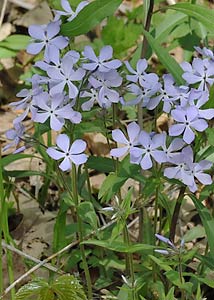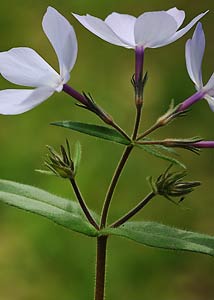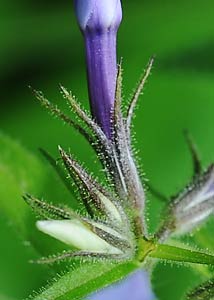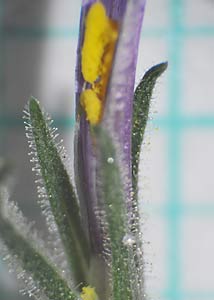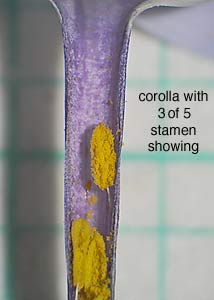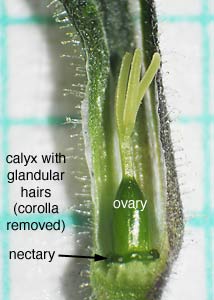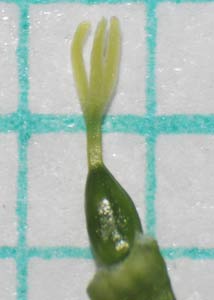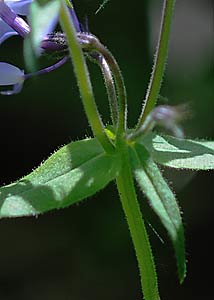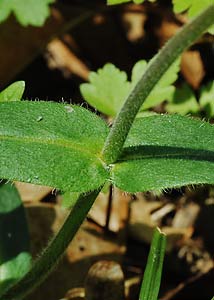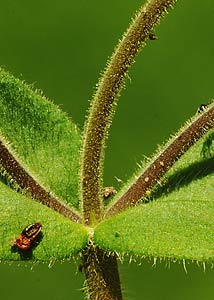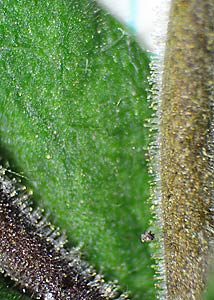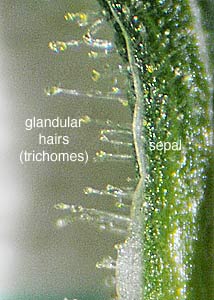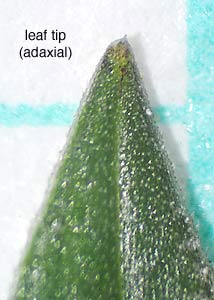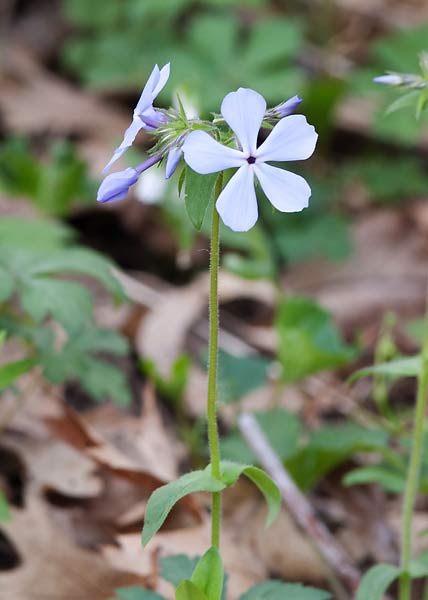
Date: April 21, 2010. Location: Amana Woods (map)
| Classification Hierarchy | |
| Kingdom | Plantae |
| Subkingdom | Tracheophyta |
| Superdivision | Spermatophyta |
| Division | Magnoliophyta |
| Class | Magnoliopsida |
| Subclass | Asteridae |
| Order | Solanales |
| Family | Polemoniaceae |
| Phlox | Phlox |
| Species | Phlox divaricata |

Date: April 21, 2010. Location: Amana Woods (map)
USDA Plant Profile Flora of N. America
Scientific Name: Phlox divaricata (phlox[G] = flame; divaricata[L] = diverging, spreading.
Common Name: Wild blue phlox
Origin: Native
Notes: Of the four native Phlox species in our area, Phlox divaricata is the most common and is often found in groups. It is also variable with regard to color and pubescence. The other three species are: P. bifida, P. maculata, and P. pilosa.
P. divaricata (wild blue phlox) can be confused with P. pilosa (downy phlox) since both species vary with regard to color and pubescence. In my experience, P. divaricata tends toward blue color and P. pilosa tends towards rose. A better distinction is the width of the leaves; P. pilosa (unlike P. divaricata) has such narrow leaves that the longest leaves exceed their width by more than 5 times. Also, P. divaricata prefers mesic fields and open woods, while P. pilosa is usually found in dry prairies.
Additional references: 1, 2, 3, 4, 5, 6, 7, 8, 9, 10.
Flowers: April; lavender-blue or lavender-magenta to white; corolla forms a tube with five petal lobes, calyx of five pointed sepals with pilose hairs which may or may not be glandular; five stamen attached at different levels to inner corolla tube; a single 3-locular ovary with a single style and 3-lobed stigma is attached, along with the nectary, to the base of the calyx.
Leaves: Flowering stem leaves are opposite, lanceolate and sessile. They tend to be less than 5 times longer than wide.
Glossaries of botanical terms: 1, 2, 3, 4, 5, 6, 7, 8, 9, 10, 11.
